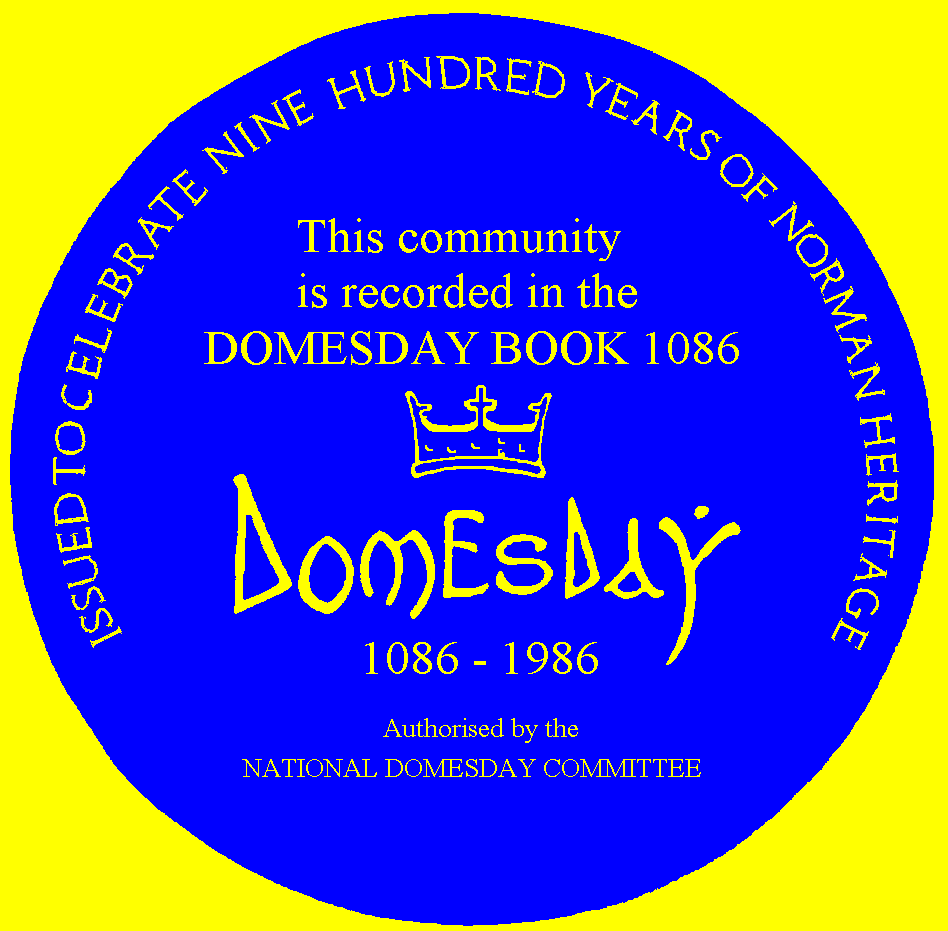 «Home
«Home «Home «Home |
WINTERBOURNE
South Gloucestershire
|
|
Winterbourne entry in Domesday Book
In SVINHEVE HD.erant T.R.E.ad firma.XXXVI.hidae in BETVNE.cu.II.membris Wapelei 7 Wintreborne.
In dnio erant.v.car.7 XLI.ui
lls.7 XXIX.bord.cu.XLV.car.Ibi.XVIII.ferui.cu.I.molino.
Hoc M T.R.E.reddeb firma uni noctis.7.m fimilit facit.
"A New History of Gloucestershire" gives a slightly different entry
(but we haven't seen the real entry to check it!):The translation is:
In SUINHEVE Hund. erant T.R.E. ad firmam xxxvi hide. in
BETUNE cum ii Membris Wapelei & Wintreborne.
In d'nio erant v car.& xli vill'i & xxix bord.cum xlv car.
Ibi xviii fervi cum i molino.
Hoc m. T.R.E. reddeb firmam unius noctis & mo. fimilit'facit.
A hide was between 60 - 100 acres, enough to support one family. A hundred was an area that could support 100 families.
"In SWINEHEAD Hundred
in the time of King Edward there were in the revenue 36 hides in BITTON,
with its two members, WAPLEY and WINTERBOURNE.
In lordship there were 5 ploughs; 41 villagers and 29 smallholders with 45 ploughs.
18 slaves with 1 mill.
In the time of King Edward this manor paid one night's revenue; now it does likewise".The Winterbourne Commemorative 1986 Plaque

1986 marked 900 years since Domesday Book was compiled.
Communities recorded in Domesday Book are entitled to display a plaque authorised by the National Domesday Committee. Winterbourne is among these. Winterbourne Parish Council presented a plaque in 1986 to the church and this is displayed on the right-hand wall of the porch.
Gloucestershire has very close links with the Domesday Survey.
The survey was commissioned by William the Conqueror at Gloucester at Christmas, 1085.
The writer of the Anglo-Saxon Chronicle stated that at Gloucester
Taken from 'The Anglo-Saxon Chronicles' (The Peterborough Manuscript) New Edition.
Translation by Michael Swanton.
Reproduced here by kind permission of the Phoenix Press.
The country was divided up into perhaps nine circuits and commissioners were appointed for each circuit. They summoned jurors from each Hundred, 'the men of the shire' and these had to vouch for the facts. Domesday entries usually gave two values for an estate - one in the time of King Edward the Confessor, and the other for 1086. In Gloucestershire over 300 estates out of 363 state both values - 44% dropped in value; 20% increased in value. There was no change in value in just over 35%.